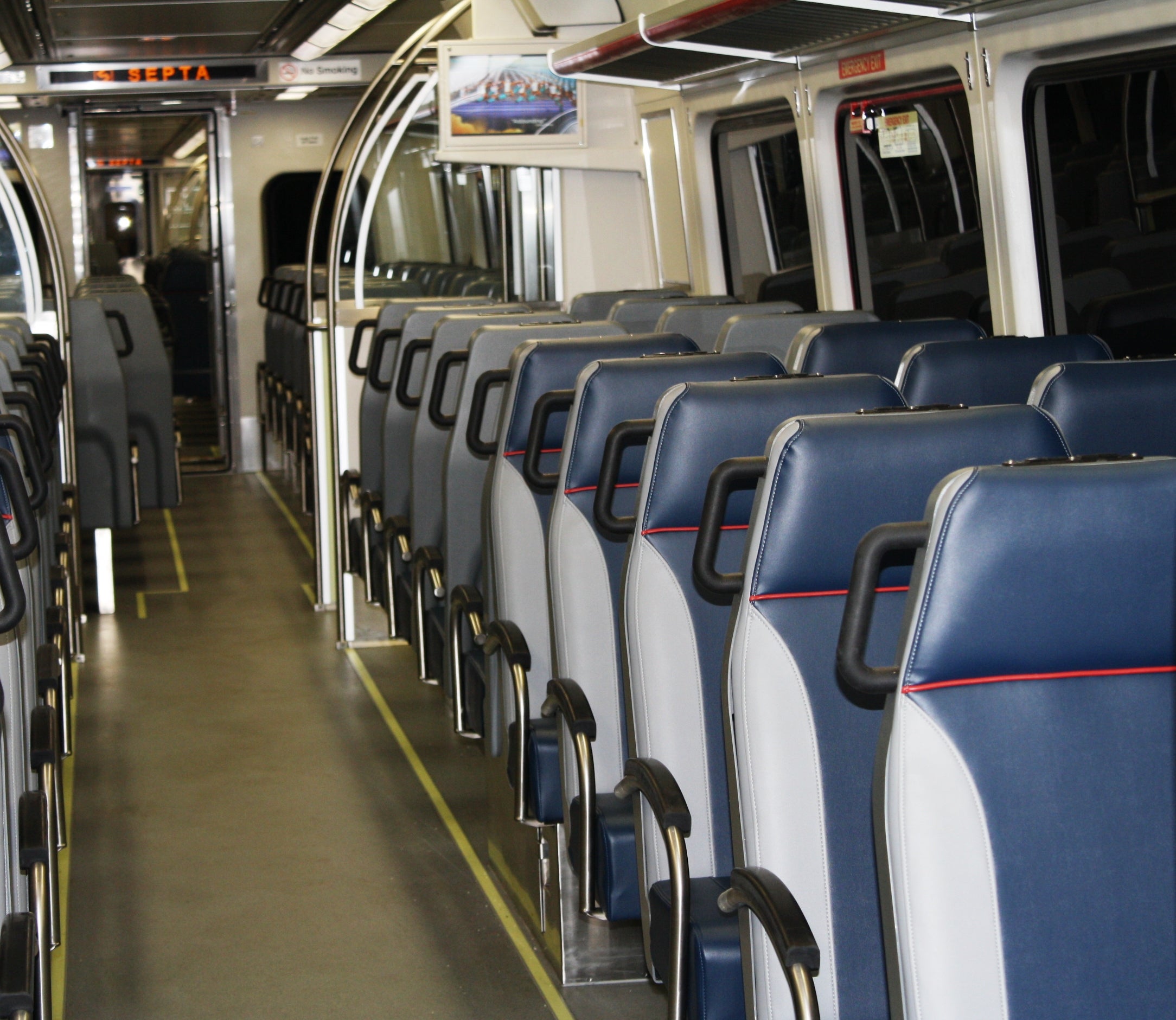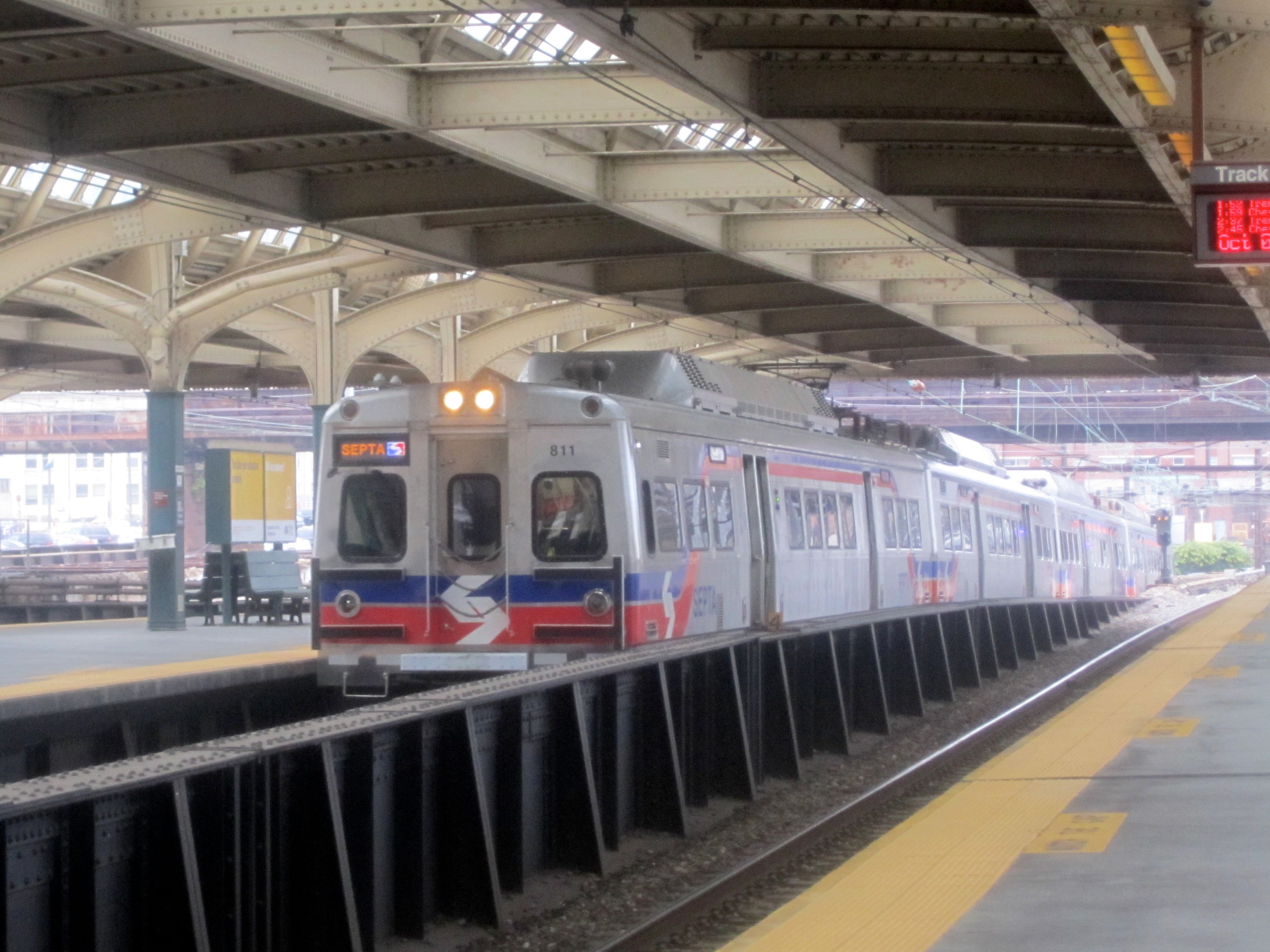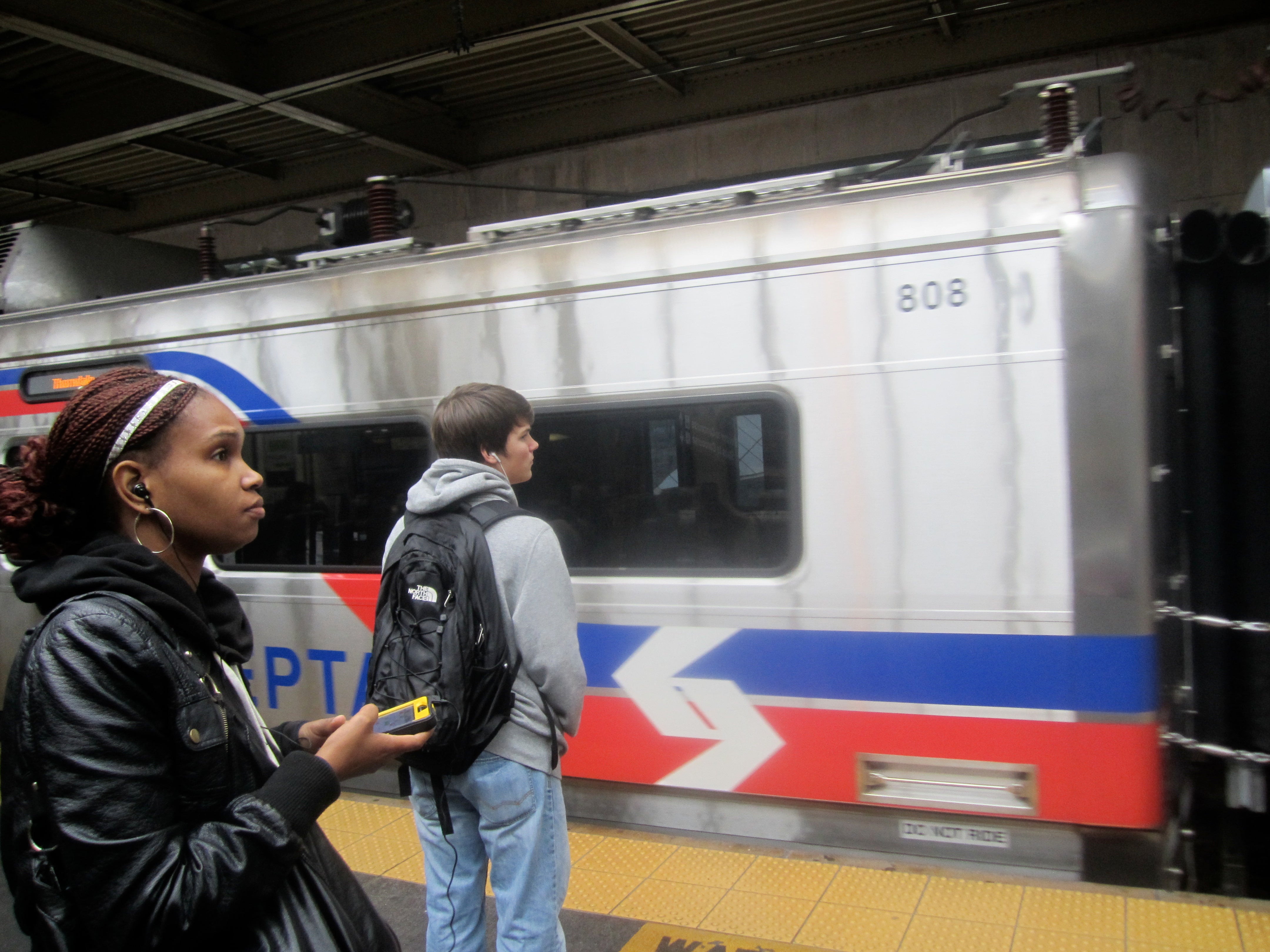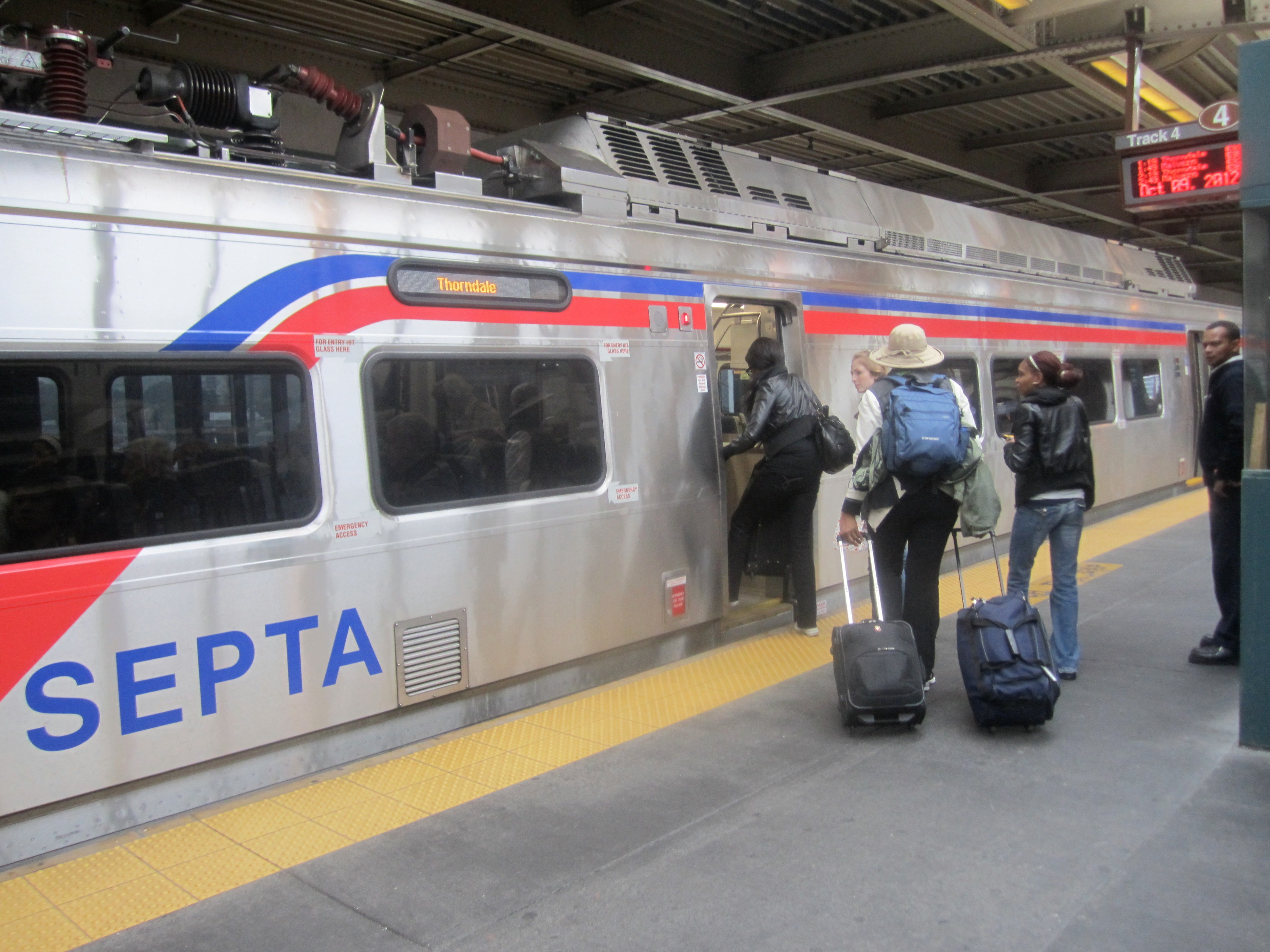Sizing up Silverliner V passenger experience. So far it’s mostly positive
Just 12 cars away from having its full Silverliner V fleet up and running, SEPTA can begin to look past the delivery delay drama and back at what it was originally interested in – improving passenger experience and accommodating a growing ridership.
“Customer experience is really what the ride is all about,” said Kim Scott Heinle, SEPTA’s Assistant General Manager of Customer Service and Advocacy.
“For the most part what we see and hear from our customers is sort of quiet gratitude,” he said. “… I think there’s sort of an expectation of, ‘Okay, great. What took you so long?”
With 108 Silverliner Vs in service on SEPTA’s regional rail routes, the feedback coming in is varied but according to Heinle, mostly positive.
Some riders, like Katherine Volk, who travels from 30th Street Station to Norristown once a week, have only positive things to say.
“They’re fabulous,” Volk said. “They’re clean. They’re fast. You can actually see where you’re going.”
Volk said the internal TV monitors and the LED displays that tell passengers which stop is next are one of the Silverliner V improvements that she has noticed the most.
“Instead of them [talking] over the intercom and it sounding muffled – this is better – they have a TV screen that says this stop is such and such, next stop is such and such,” said Shelia Wortham, who takes SEPTA from Philadelphia to Wilmington, Del. several times a week.
Wortham’s biggest complaint is the seats.
“To me the seats are more uncomfortable,” she said. “They sit you straight up … The only thing I would probably rather see is a more comfortable seat.”
SEPTA is interested in gathering and addressing feedback like this, Heinle said.
“I want [customers] to continue to share their experience with us so we have that information – what they like, what they don’t like,” he said.
To crowd source feedback, the Delaware Valley Association of Rail Passengers held a Silverliner V passenger workshop early last month.
“Generally speaking the things most apparent were the acceleration and braking, especially the acceleration,” said DVARP’s Matthew Mitchell, who led the workshop.
The Silverliner Vs “run quickly, and that should help improve on time performance.”
He said workshop participants had the most complaints in regard to the onboard automated announcements.
“People have a variety of things they just find annoying,” he said of the repetitive announcements and automated voice.
A few riders complained that the announcements at some stops, like Center City’s Market East Station, where the automated voice mentions connections to Greyhound buses, PATCO and Reading Terminal Market, are too long, while some announcements, which simply indicate that trains do not stop at all stations, are too vague.
When it comes to the seats, Mitchell said, the “general consensus is they’re perfectly satisfactory but nothing special.”
The seats on the Silverliner Vs are wider than those on the Silverliner IVs, Mitchell noted, and because of that he said there is less resistance to taking the middle seat in Silverliner V sections with three seats as opposed to two.
“What we’ve seen is while the actual number of seats in the IVs is higher, the actual impact on crowding isn’t as big [as people might suspect],” he said.
“I guess most of the complaints have nothing to do with the cars but have to do with service,” Heinle said in reference to crowding on the trains passing through Center City stops during peak hours.
Officials at SEPTA said the crowding is due more to an increase in ridership, possibly due to higher gas prices and students returning to school this fall, than it is to the trains themselves.
The new Silverliner Vs have 109 seats, 11 fewer than the Silverliner IVs, which have 120 seats. However, there are currently 108 Silverliner Vs running in place of the 73 Silverliner IIs and IIIs, which were retired from the fleet, so according to SEPTA there are enough extra cars to make up for the missing seats.
When Hyundai Rotem completes the order, the Silverliner V fleet will include a total of 120 cars, which will help alleviate some crowding.
On busy trains, passengers may be quick to notice that the railfan seats, the first row of seats adjacent to the engineer in the lead car, are roped off to give the engineer more space.
“The cabs have been a sticking point,” Mitchell said. He said the engineers’ union has been trying to get the cabs reconfigured to be larger, but that the only time this might be necessary is when more than one engineer is needed at the front of the train for training or special circumstances.
“Any expansion of the cab is going to come at the expense of the passengers,” he said. “There’s no valid safety related reason to change these cabs.”
Rather than reconfigure the cabs in each car, SEPTA compromised and now allows the railfan seats to be roped off.
“The alternative was to run every car with a full cabin, and we decided this was not the way to go,” Heinle said.
Crowding may also increase when one car is removed from a train for necessary maintenance, but SEPTA said it tries to maintain as many cars as possible.
While the Silverliner IVs and Vs can be joined together to make a train in the event that one is disabled and needs to be moved, the IVs and Vs were designed to operate independently. SEPTA officials said there are no plans to join the two.
Next month SEPTA will launch its biannual customer satisfaction survey, which will target a variety of customers on all SEPTA services, and the organization will be paying special attention to regional rail and Silverliner V feedback, Heinle said.
“To their credit, SEPTA has been very interested in getting into this dialogue,” Mitchell said.
After DVARP has gathered more customer feedback, the organization will meet with SEPTA and add to the ongoing discussions.
“This is where we as riders like to be,” Mitchell said. “SEPTA wants us to be the eyes and ears of the system, and we’re happy to do that.”
Contact the reporter at cfisher@planphilly.com
WHYY is your source for fact-based, in-depth journalism and information. As a nonprofit organization, we rely on financial support from readers like you. Please give today.










